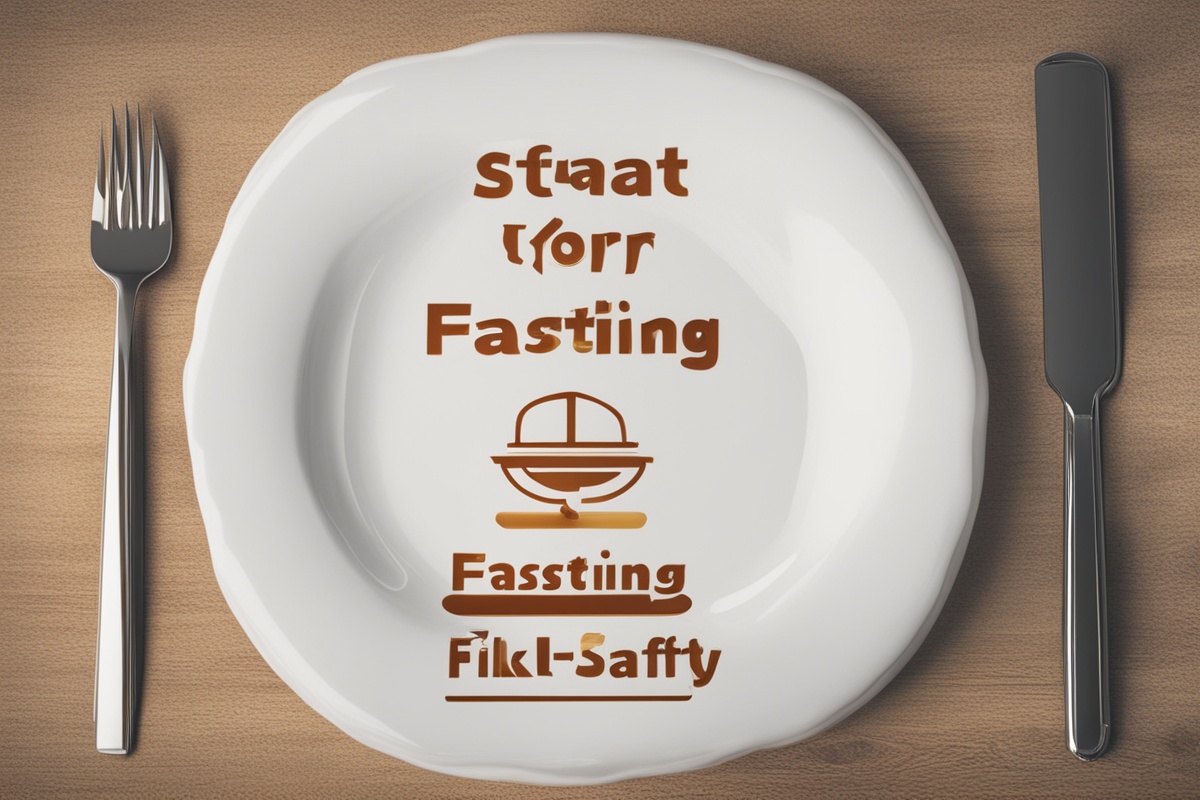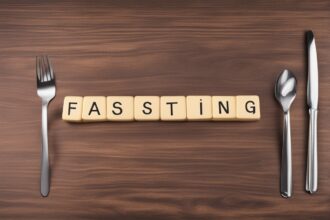Hey there, fasting enthusiasts! Whether you’re a seasoned faster or just dipping your toes into the world of intermittent fasting, water fasting, or religious fasting, safety should always be your top priority. Fasting can offer incredible health benefits, like improved metabolic health and mental clarity, but only if done right. That’s why I’ve put together this comprehensive guide on safe fasting tips to help you navigate this journey with confidence. We’ll dive into the science, practical precautions, and actionable advice to ensure your fasting experience is both effective and secure. Let’s get started on how to fast safely and sustainably!
Understanding the Basics of Fasting Safety
fasting, at its core, is the voluntary abstinence from food and, in some cases, drink for a specific period. While it’s been practiced for centuries across cultures for spiritual and health reasons, not everyone’s body responds to fasting the same way. Safety starts with understanding that fasting isn’t a one-size-fits-all approach. Factors like your age, health status, and lifestyle play a huge role in determining whether fasting is right for you. Research shows that while fasting can improve insulin sensitivity and promote autophagy (the body’s cellular cleanup process), it can also lead to risks like dehydration or nutrient deficiencies if not done properly (Mattson et al., 2017). So, before you jump in, let’s break down how to prioritize fasting safety precautions and make informed choices.
Who Should and Shouldn’t Fast?
Not everyone is a good candidate for fasting. While many healthy adults can benefit from intermittent fasting or short-term fasts, certain groups should steer clear or consult a healthcare provider first. For instance, pregnant or breastfeeding women, individuals with eating disorders, or those with chronic conditions like diabetes should avoid fasting due to potential risks (Trepanowski & Bloomer, 2010). If you’re on medication or have a history of low blood sugar, fasting could complicate your health. On the flip side, if you’re generally healthy and looking to try fasting for weight management or mental focus, starting slow with guidance can be a safe bet. Always listen to your body and seek medical advice if you’re unsure about how to fast safely.
Essential Safe Fasting Tips for Beginners
If you’re new to fasting, the idea of skipping meals might feel daunting. But with the right approach, you can ease into it without overwhelming your system. Here are some fasting safety guidelines to keep in mind as you start out. These tips are designed to minimize discomfort and maximize benefits, ensuring you don’t push your body too hard too soon.
- Start Small: Begin with a shorter fasting window, like the 12:12 method (12 hours fasting, 12 hours eating), before progressing to 16:8 or longer fasts. This helps your body adjust gradually.
- Stay Hydrated: Water is your best friend during a fast. Dehydration is a common risk, especially during water-only fasts, so aim for at least 8–10 cups of water daily unless otherwise restricted (Institute of Medicine, 2005).
- Break Your Fast Gently: Don’t dive into a heavy meal right after fasting. Start with light, easily digestible foods like broth, fruits, or vegetables to avoid digestive upset.
- Monitor Your Body: Pay attention to signs of fatigue, dizziness, or irritability. These could indicate that your body isn’t handling the fast well, and it’s time to stop.
Advanced Fasting Safety Precautions for Longer Fasts
Once you’re comfortable with shorter fasting windows, you might be tempted to try extended fasts, like 24-hour or multi-day fasts. While these can offer deeper benefits like enhanced fat burning and mental clarity, they also come with higher risks if not managed carefully (Longo & Mattson, 2014). Electrolyte imbalances, extreme fatigue, and even muscle loss are potential pitfalls. Here’s how to approach longer fasts with safe fasting practices to protect your health.
- Supplement Electrolytes: During extended fasts, your body loses essential minerals like sodium, potassium, and magnesium. Consider adding a pinch of salt to your water or using an electrolyte supplement (consult a doctor first).
- Avoid Overexertion: Limit intense physical activity during long fasts. Your energy levels may dip, and overdoing it can lead to injury or exhaustion.
- Prepare for Refeeding: After a multi-day fast, reintroduce food slowly over a few days. Start with small portions of nutrient-dense foods to prevent refeeding syndrome, a rare but serious condition (Mehanna et al., 2008).
- Have a Support System: Let friends or family know you’re doing a longer fast. Having someone check in on you can provide peace of mind and quick help if something feels off.
- Stop if Necessary: If you experience severe symptoms like confusion, heart palpitations, or fainting, end the fast immediately and seek medical attention.
Common Risks and How to Avoid Them
Even with the best intentions, fasting can come with challenges if you’re not prepared. Some people experience headaches, irritability (hello, hanger!), or low energy, especially in the early stages. More serious risks include hypoglycemia (low blood sugar) or dehydration, which can be dangerous if ignored (Cahill, 2006). The good news? Most of these issues can be avoided with proper planning and attention to fasting safety tips. Stay hydrated, don’t skip on sleep, and avoid fasting during high-stress periods when your body is already taxed. If you’re feeling unwell, don’t push through—your health comes first. Remember, fasting should feel sustainable, not punishing.
Nutrition and Lifestyle Support for Safe Fasting
Fasting isn’t just about what you don’t eat—it’s also about how you support your body before and after. Nutrition plays a critical role in healthy fasting practices. During eating windows, focus on balanced meals with protein, healthy fats, and complex carbs to keep your energy stable. Avoid overloading on sugary or processed foods, as they can cause energy spikes and crashes. Additionally, lifestyle factors like stress management and adequate sleep enhance fasting outcomes. Studies suggest that poor sleep can disrupt hunger hormones like ghrelin and leptin, making fasting harder (Spiegel et al., 2004). So, prioritize rest, stay active with light exercise like walking, and keep stress in check with mindfulness or meditation. These habits create a strong foundation for a safe and effective fasting journey.
As we wrap up, I want to remind you that fasting can be a powerful tool for health and wellness, but only when approached with care and knowledge. These safe fasting tips are your roadmap to a rewarding experience—whether you’re aiming for weight loss, better focus, or spiritual growth. Start slow, listen to your body, and don’t hesitate to consult a healthcare professional if you’re unsure. Fasting isn’t about deprivation; it’s about tuning into what your body needs. So, take these fasting safety guidelines to heart, and let’s make your fasting journey a healthy and sustainable one. Have you tried fasting before? Drop your thoughts or questions in the comments—I’d love to hear from you!
References
- Cahill, G. F. (2006). Fuel metabolism in starvation. Annual Review of Nutrition, 26, 1–22. https://doi.org/10.1146/annurev.nutr.26.061505.111258
- Institute of Medicine. (2005). Dietary Reference Intakes for Water, Potassium, Sodium, Chloride, and Sulfate. National Academies Press.
- Longo, V. D., & Mattson, M. P. (2014). Fasting: Molecular mechanisms and clinical applications. Cell Metabolism, 19(2), 181–192. https://doi.org/10.1016/j.cmet.2013.12.008
- Mattson, M. P., Longo, V. D., & Harvie, M. (2017). Impact of intermittent fasting on health and disease processes. Ageing Research Reviews, 39, 46–58. https://doi.org/10.1016/j.arr.2016.10.005
- Mehanna, H. M., Moledina, J., & Travis, J. (2008). Refeeding syndrome: What it is, and how to prevent and treat it. BMJ, 336(7659), 1495–1498. https://doi.org/10.1136/bmj.a301
- Spiegel, K., Tasali, E., Penev, P., & Van Cauter, E. (2004). Brief communication: Sleep curtailment in healthy young men is associated with decreased leptin levels, elevated ghrelin levels, and increased hunger and appetite. Annals of Internal Medicine, 141(11), 846–850. https://doi.org/10.7326/0003-4819-141-11-200412070-00008
- Trepanowski, J. F., & Bloomer, R. J. (2010). The impact of religious fasting on human health. Nutrition Journal, 9, 57. https://doi.org/10.1186/1475-2891-9-57






